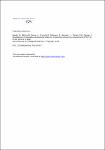Development of sensitive methods for detection of porcine endogenous retrovirus-C (PERV-C) in the genome of pigs
Kaulitz, Danny
Mihica, Debora
Dorna, Jens
Costa, Michael Rodrigues
Petersen, Björn
Niemann, Heiner
Tönjes, Ralf R.
Denner, Joachim
Porcine endogenous retroviruses (PERV) represent a risk for xenotransplantation using pig cells, tissues or organs. PERV-A and PERV-B are present in the genome of all pigs and both infect human cells in vitro. PERV-C infects only pig cells and it is integrated in the genome of most, but not all pigs. Recombinants between PERV-A and PERV-C were described that infect human cells and replicate at high titres. To avoid such recombinations, PERV-C positive animals should not be used for breeding animals suited for xenotransplantation. In order to detect PERV-C positive pigs, different methods were developed such as specific PCRs using different primers, a highly sensitive nested PCR and a real-time PCR allowing measurement of proviral copy numbers. The real-time PCR was found to be useful to discriminate between contamination and actual provirus copies. The PCRs were optimized and their sensitivity was determined. Screening can be started with PCR1, if the result is negative, PCR2 to PCR5 or the nested PCR should be used, if the result is positive, the real-time PCR should be used to exclude contaminations. All methods were used to evaluate the prevalence of PERV-C and to identify PERV-C free animals. Due to the risk of contamination with cells from other animals testing should be performed with blood cells, not with ear biopsies.
Dateien zu dieser Publikation
Keine Lizenzangabe

